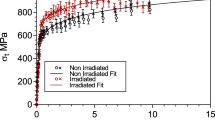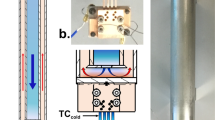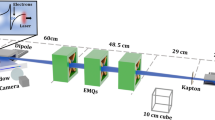Abstract
THE published ranges of fast electrons and the associated depth/dose curves have been measured in slabs of material irradiated with initially mono-energetic electrons. Such figures give an indication of the maximum thickness of bulk material which can be usefully irradiated with an electron beam of a particular energy.
This is a preview of subscription content, access via your institution
Access options
Subscribe to this journal
Receive 51 print issues and online access
$199.00 per year
only $3.90 per issue
Buy this article
- Purchase on Springer Link
- Instant access to full article PDF
Prices may be subject to local taxes which are calculated during checkout
Similar content being viewed by others
References
Vale, R., and Farrell, J., Detector for large doses of radiation, Patent No. 920,689 (March 1963).
Trageser, D. A., Nuc. Ins. and Methods, 6, 26 (1960).
Author information
Authors and Affiliations
Rights and permissions
About this article
Cite this article
MCCANN, J., ROGERS, F. Difficulties in obtaining Uniform Dose Distribution throughout Electron-irradiated Plastic Mouldings. Nature 200, 1195–1196 (1963). https://doi.org/10.1038/2001195a0
Issue Date:
DOI: https://doi.org/10.1038/2001195a0
Comments
By submitting a comment you agree to abide by our Terms and Community Guidelines. If you find something abusive or that does not comply with our terms or guidelines please flag it as inappropriate.



